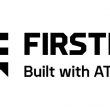AT&T to build nation’s initial FirstNet tribal-land cell site in Wisconsin
Red Cliff Reservation in Wisconsin will benefit from wireless coverage from the FirstNet system’s first LTE cell site that is being installed on tribal land—a development that promises to transform communications for first responders and others on the reservation and in surrounding areas, according to local and federal officials.
Located on the banks of Lake Superior in northwest Wisconsin, the Red Cliff Reservation currently has wireless coverage in less than 20%—from a cell site on a nearby island—of its 15,000 acres, according to Theron Rutyna, IT director, Red Cliff Band of Lake Superior Chippewa. With the installation of a 300-foot FirstNet tower on an elevated location that used to house an abandoned water tower, “pretty much all of our major areas will be covered after this,” he said.
“Essentially, it allows the technology to come into the 21st Century to be able to provide broadband and cellular communications for schoolkids, so they can do their homework,” Rutyna said during an interview with IWCE’s Urgent Communications. “Emergency communications is the major thing, especially with FirstNet. It allows first responders, if they get out of the range of their land-mobile communications, to be able to talk back to dispatch, if they need to.”
FirstNet Authority board member Paul Patrick echoed this sentiment, describing the new tower as a “game-changer” for communications on the reservation, particularly for first responders.
“Because they have that communication link, I would say that you are looking at increasing the care that EMS will be able to give … by a huge amount from what they have now—a 100% increase is not out of reach,” Patrick said during an interview with IWCE’s Urgent Communications. “And, for police and fire, they’ll be able to get the data they need. That’s the real advantage with what we’re doing at FirstNet. It’s a public-safety network, and we’re changing the game everywhere.
“It will definitely help with the provision of public safety—police, fire and EMS, as well as clinics and hospitals. This kind of paves the way for telehealth, so it will be exciting to be able to do that. The real advantage of telehealth is that you can keep the patients local and give them the care that they need by connectivity to the extended-care facilities and tertiary care.”
While the groundbreaking ceremony for the Red Cliff tower was conducted this week, the cell site is not expected to be operational until late this year or early in 2020, according to a spokesperson for AT&T, the nationwide contractor for the FirstNet system.
Rutyna said the cell tower is much-needed, as evidenced by a tragic event that occurred last year on the reservation, which is home to 1,350 resident but can get much more crowded when several thousand tourists visit during certain times of the year.
“There was a group of kayakers killed last year out on the lake, because they couldn’t get a signal out to call 911,” Rutyna said. “This tower is range of those areas that are constantly covered by kayakers and other vacationers. When the sea caves open, there can be 100,000 people coming through the reservation to see the sea caves. That creates a major problem for communications.
“Having a FirstNet tower here means that our first responders and government will be able to communicate, even if the airwaves are saturated by tourists, other people coming through, or a natural disaster.”
Red Cliff Reservation’s tribal council has been working for at least 14 years in an effort to convince a carrier to build a cell site on the tribal lands, even funding the installation of fiber on the tribal land, according to Rutyna. Soon, that fiber will be used to provide backhaul from the new FirstNet cell site to a peering location.
Installing fiber on tribal lands is a growing strategy among tribes that want to embrace modern technologies, according to Rutyna.
“Everybody who can afford fiber or can find a way to install fiber is trying to, because no one is going to do it for the reservations,” he said. “So, the reservations are trying hard to find ways to do it themselves. That’s really what they’re working on. It’s a hard fight.”
Even with the fiber in place, the Red Cliff Reservation was not able to convince a commercial operator to fund wireless coverage until tribal officials became involved in the FirstNet Authority effort to develop the state plan for Wisconsin.
“They were the first tribe to do consultation when we went through the tribal consultations process and approved that,” Patrick said. “Now, they are first tribe to come forward with an agreement with our partner AT&T, so this is the first [FirstNet] tower being built on tribal land.”
In addition to providing LTE coverage beginning in the next several months, the new FirstNet tower also will serve as a relay point for microwave links and other technologies in the future, according to Rutyna. Tribal officials also are aware that small-cell deployments will be needed to address coverage gaps caused by the terrain on the reservation, he said.
Patrick said that the FirstNet Authority and AT&T have tried to be sensitive to tribal wishes in the planning and eventual installation of the new tower site. Birch trees are sacred to the tribe, so any birch wood that has to be cleared as part of the cell construction is being saved and returned to the tribe for its use, according to Rutyna.
As part of its contract with the FirstNet Authority, AT&T made its entire commercial LTE system available to first-responder subscribers and agreed to install more than 1,000 new cell sites in locations that state and territory officials have identified as needing coverage, typically in rural areas. The Red Cliff tower announcement is one example of that coverage-extension effort, as is this week’s groundbreaking on another cell site in Preston County, W.Va.
“I have long advocated for rural broadband expansion to support our communities and first responders,” Sen. Shelly Moore Capito (R-W.V.) said in a prepared statement associated with the Preston County announcement. “This and other sites still in the works will help further extend rural coverage in a way that benefits both public safety and the broader community.
“When emergencies happen, it is critical that our firefighters, law enforcement officers, paramedics, 911 telecommunicators and emergency managers all have the communications tools they need to achieve their mission—keeping themselves, West Virginians, and our communities safe.”
Other new FirstNet sites that have been announced previously are located in Bedford County, Pa. and Baltimore, Md.
“The new sites support our mission to reach agencies of all sizes—urban, rural and tribal—with the reliable connectivity and modern communications tools they need,” according to a statement from an AT&T spokesperson.
















